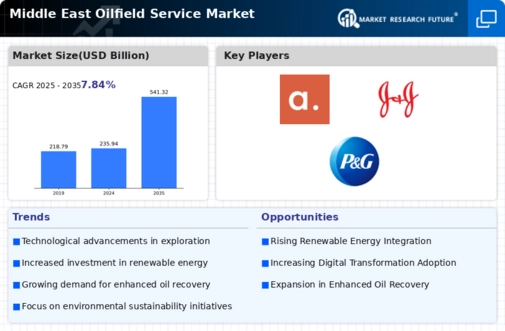Market Analysis
In-depth Analysis of Middle East Oilfield Service Market Industry Landscape
The Middle East oilfield service market operates within a complex web of factors, influenced by global trends, regional geopolitics, and the inherent dynamics of the oil and gas industry. At its core, this market revolves around the provision of essential services to support oil and gas exploration, drilling, production, and maintenance activities in the region. One of the primary drivers shaping market dynamics is the fluctuation in oil prices, which can have a significant impact on the demand for oilfield services. When oil prices are high, there tends to be greater investment in exploration and production activities, leading to increased demand for services such as drilling, well completion, and reservoir management. Conversely, during periods of low oil prices, oil companies may scale back their operations, reducing the need for oilfield services.
Geopolitical factors also play a crucial role in shaping the Middle East oilfield service market. The region is home to some of the world's largest oil reserves, and political instability or conflicts in key oil-producing countries can disrupt production and exploration activities. These disruptions can create uncertainty for oilfield service companies operating in the region, as they navigate challenges such as supply chain disruptions, project delays, and security concerns. Additionally, geopolitical tensions can impact investment decisions by oil companies, leading to fluctuations in demand for oilfield services.
Technological advancements are another key driver of market dynamics in the Middle East oilfield service sector. As oil and gas reserves become increasingly difficult to access, there is a growing need for innovative technologies to enhance exploration and production efficiency. This has led to increased demand for services such as hydraulic fracturing, directional drilling, and enhanced oil recovery techniques. Oilfield service companies that invest in research and development to develop and deploy cutting-edge technologies are well-positioned to capitalize on these opportunities and gain a competitive edge in the market.
Regulatory factors also shape the operating environment for oilfield service companies in the Middle East. Governments in the region often play a significant role in the oil and gas industry, setting regulations and policies that govern exploration, production, and environmental protection. Compliance with these regulations can impact the cost of doing business for oilfield service companies and influence market dynamics. Additionally, changes in government policies, such as tax incentives or subsidies for oil and gas development, can affect investment decisions and drive demand for oilfield services.
Market competition is fierce in the Middle East oilfield service sector, with numerous international and regional players vying for market share. Competition is based on factors such as price, technological capabilities, reputation, and relationships with oil and gas companies. International oilfield service giants often compete with local players who have a deep understanding of the regional market and established relationships with key stakeholders. This competitive landscape drives innovation and efficiency as companies strive to differentiate themselves and win contracts in a crowded market.
The Middle East oilfield service market is shaped by a complex interplay of factors including oil prices, geopolitical dynamics, technological advancements, regulatory environment, and market competition. Despite challenges such as political instability and fluctuating oil prices, the region remains a key hub for oil and gas activity, presenting significant opportunities for oilfield service companies. By staying abreast of market trends, investing in innovation, and building strong relationships with clients, oilfield service companies can navigate the dynamic landscape of the Middle East oil and gas industry and thrive in this competitive market.















Leave a Comment